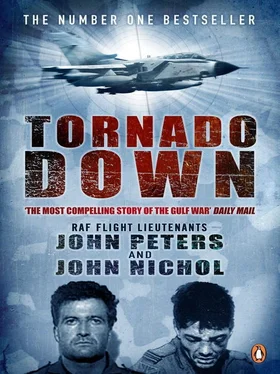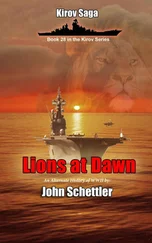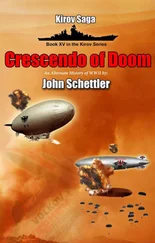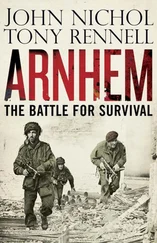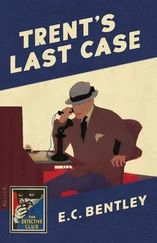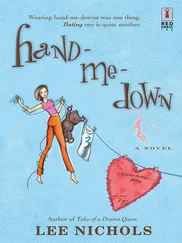John Nichol - Tornado Down
Здесь есть возможность читать онлайн «John Nichol - Tornado Down» весь текст электронной книги совершенно бесплатно (целиком полную версию без сокращений). В некоторых случаях можно слушать аудио, скачать через торрент в формате fb2 и присутствует краткое содержание. Город: London, Год выпуска: 2008, ISBN: 2008, Издательство: Penguin Adult, Жанр: nonf_military, Биографии и Мемуары, на английском языке. Описание произведения, (предисловие) а так же отзывы посетителей доступны на портале библиотеки ЛибКат.
- Название:Tornado Down
- Автор:
- Издательство:Penguin Adult
- Жанр:
- Год:2008
- Город:London
- ISBN:978-0-14-193771-7
- Рейтинг книги:5 / 5. Голосов: 1
-
Избранное:Добавить в избранное
- Отзывы:
-
Ваша оценка:
- 100
- 1
- 2
- 3
- 4
- 5
Tornado Down: краткое содержание, описание и аннотация
Предлагаем к чтению аннотацию, описание, краткое содержание или предисловие (зависит от того, что написал сам автор книги «Tornado Down»). Если вы не нашли необходимую информацию о книге — напишите в комментариях, мы постараемся отыскать её.
In
, John Peters and John Nichol tell the incredible story of their part in the war against Saddam Hussien’s regime. It is a brave and shocking and totally honest story: a story about war and its effects on the hearts and minds of men.
Tornado Down — читать онлайн бесплатно полную книгу (весь текст) целиком
Ниже представлен текст книги, разбитый по страницам. Система сохранения места последней прочитанной страницы, позволяет с удобством читать онлайн бесплатно книгу «Tornado Down», без необходимости каждый раз заново искать на чём Вы остановились. Поставьте закладку, и сможете в любой момент перейти на страницу, на которой закончили чтение.
Интервал:
Закладка:
I am concentrating very hard on the little screen at front left of the cockpit, the ‘E-scope’, a three-inch by four-inch display that shows me an electronic image of the ground ahead relative to our height and position. The Terrain-Following radar in the aircraft’s nose projects a pulse ahead of us. This reads the folds and furrows of the earthscape rushing towards the plane. In automatic mode the aircraft flies itself, following the computer-generated climb or descend commands. The crew sits ‘hands off, their lives entrusted to a smart piece of silicon. The Terrain-Following system means the Tornado can still press home its attack even in pitch-darkness and in bad weather. Really, it’s a very sophisticated kind of automatic pilot. You have to have absolute faith in the technology. It comes – with practice!
Along with all the flying, we were delving ever more deeply into the arcane mysteries of our own and the opposition’s weaponry. There was lots of extra book-work to get through, learning more about the enemy’s capabilities and aircraft types, his radars and missile systems, in great and exhaustive detail. There was a disturbing amount to learn about the Iraqi Air Force. The ‘worst case’ intelligence assessments were that the Iraqis had over 700 combat aircraft, excluding helicopters. Their massive inventory included some very modern and very effective types: more than fifty Mig-29 (NATO codename ‘Fulcrum’) air superiority fighters; seventy Mirage Fl fighter-bombers; thirty Mig-25 ‘Foxbat’ interceptors; and whole swarms of Mig-23 ‘Floggers’, Su-22 ‘Fitters’ and Su-25 ‘Frog-foots’. This little lot was dispersed over sixty-odd airfields throughout the country, many of which had plenty of spare tarmac to take off from, or ‘substantial in-built runway redundancy’, as the intelligence handout put it. Some of these places were gigantic: two or three times the size of Heathrow. To defend these well-equipped airfields, Iraq had a choice of missile and Triple-A systems bought off-the-shelf from both Soviet and Western sources. The country also had an almost inexhaustible supply of conscripted manpower, much of it battle-hardened from the recent eight-year war with Iran. Since it takes very little wit to fire a gun into the air, Saddam Hussein’s threat of creating ‘lead walls’ – curtains of ground fire for us happy chappies to fly into – had to be taken seriously.
Aircrew always read the technical manuals anyway, in peacetime, but the work was much more emphatic now, preparing for the specific environment in which we would be fighting. We spent days on end attacking Iraqi airfields in the flight simulator. Everyone had this immense thirst for knowledge. Even the most junior people on the Squadron would question something, refusing to be fobbed off unless they were entirely happy: ‘I don’t agree. Why do it that way? Why not do it this way?’ This attitude extended right down to even the smallest details of operational practice. With the prospect of death in front of them, people became much readier to question the wisdom of their superiors; and their superiors, on the whole, accepted this questioning as a healthy sign. The attitude of the Boss, Wing Commander John Broadbent, was: ‘The Squadron is going to war, and I’d like the best out of it.’ All the brainstorming was designed to achieve that objective. When everyone had chipped in their three-pennyworth about how this, that or the other should be done, the senior people – the Boss, the Flight Commanders, the Weapons Instructors and the Electronic Warfare Officers – all went into a room one day to make smoke. They emerged with our ‘War Doctrine’, that is, the operational flying bible for the Squadron. Broadly speaking, all RAF squadrons would be operating the same tactics – it was more a question of an emphasis here, a small procedural change there – but all these little things mattered hugely to us. Although they are much smaller, Royal Air Force squadrons are like regiments, in one respect: they are something of a family affair. The XV Squadron family, about 200-strong, was spending a lot of time together, and finding out a lot about itself in the process.
4
The Last Supper
John Nichol: It wasn’t all work. Our Christmas parties were brought forward, because we’d be out in the Gulf before then. JP and I found ourselves Entertainment Officers for the Squadron. The annual Lunch of the Year was coming up at Laarbruch, but, this being early December 1990, it was also a Lunch of the Decade, so something special was in order.
We called it ‘The Last Supper’. Instead of balloons and party streamers, we had the whole crewroom blacked out, in swathes of velvet and dark cotton. There was a votive, church-like atmosphere: solemn fugues playing mournfully in the background, and people reading resonant extracts from the Bible. As they came into the crewroom, everyone paraded up to the tables carrying candles, putting them all down the middle. We had what we imagined to be Last Supper food: feta cheese, olives, ‘Galilee Fish’, ‘Passover Lamb’, fruit. Everyone was dressed in their flying-suits, but they had to wear something purple, and sandals on their feet. We had three seats set up at the end of the room. In front of each chair was a bowl, brimming with soapy water. The Boss and the two Flight Commanders took up position in these seats, washing the feet of all the sandal-clad fliers coming in to join the fun. To help them in this important task, they had huge, horrible great scrubbing-brushes… most people got quite wet, somehow. Between courses, there were further readings from the Bible.
It sounds sacrilegious, even blasphemous, but it wasn’t like that. As it was, we couldn’t say, ‘Let’s go and have a church service, let’s all pray together’, although the chaplain did his best to encourage us. It just wasn’t done. But done this way, it was somehow acceptable. People were letting off steam, and most of them got a little the worse for wear; but there was a breath of something in the air, of people coming to terms with events. It was as if the religious ritual, diluted and disparaged though it might be, provided some sort of answer to a question we had not yet even asked ourselves. As a lunch it was certainly memorable.
Everybody gave each other their Christmas presents early. We were told categorically that we would be out in the Gulf by 25 December. But even then, with the war looming daily in the headlines, I was still convinced it was not going to involve me. It just wasn’t going to happen. I had been on standby to go to Lebanon, to Ethiopia; we had always got blown up ready to go, and then we didn’t go. It looked very unlikely, what with all the shilly-shallying, that we would be going this time. I was quite happy with that. There were, after all, a lot of nasty men out there with guns, who would be trying very hard to kill us.
Talking about guns, in the bar one night we had all been joking about what might happen if the shooting really did start. The worst fear – and despite all the ribaldry it was a fear – was fear of capture. Everyone said the same thing: ‘We don’t mind being shot down and killed, but we don’t want to be shot down and caught.’
By this time, horror stories had begun to emerge in the Western media about the things Iraq’s ruling Ba’ath Party torturers were doing to the Kuwaiti people – like cutting off their ears and nailing them to the wall, or drilling through their eyes with a power drill. We knew from some of the excellent coverage in the more ‘serious’ newspapers that the Ba’ath Party, with about one million members, was the political instrument with which Saddam Hussein held onto power in Iraq. We also knew that the Ba’ath Party was to Iraq what the Gestapo had been to Nazi Germany: it held its own citizens in the grip of abject fear through the systematic exercise of terror. And these were the nice gentlemen who would interrogate us if we were captured. So the consensus, although it was hard to say whether people meant it seriously or not, was that if it looked like you were going to be captured, the thing to do was to put your service-issue pistol to your head, and blow your brains out. Looking at the smiling faces all around, joking about the whole thing, it struck me as being very unlikely, in the event, that any of us would actually do it. But we all had images, absorbed from films and books about the POWs in Vietnam, of rat-infested pits, of prisoners standing tied to a post in a freezing river for a week, with rodents chewing at their vital parts. Also, the British press was busily hyping away, printing stories saying that captured Allied pilots would be torn limb from limb by the Iraqi people, and so on. We didn’t necessarily believe this sort of stuff, but these were the things we were reading about, that we were inevitably thinking about. I suppose all the bantering about self-destruction was a way of getting the subject out into the open, where we could discuss it. I said I’d play it by ear (pun intended) if the time came, but JP said, ‘What if they cut your balls off and sewed them into your mouth? That’s what they used to do to captured RAF pilots in the Yemen back in the Twenties. You’d kill yourself if you thought that was going to happen…!’
Читать дальшеИнтервал:
Закладка:
Похожие книги на «Tornado Down»
Представляем Вашему вниманию похожие книги на «Tornado Down» списком для выбора. Мы отобрали схожую по названию и смыслу литературу в надежде предоставить читателям больше вариантов отыскать новые, интересные, ещё непрочитанные произведения.
Обсуждение, отзывы о книге «Tornado Down» и просто собственные мнения читателей. Оставьте ваши комментарии, напишите, что Вы думаете о произведении, его смысле или главных героях. Укажите что конкретно понравилось, а что нет, и почему Вы так считаете.
